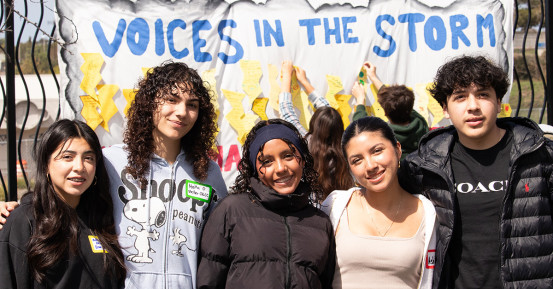By:
- Michelle Franklin
Published Date
By:
- Michelle Franklin
Share This:
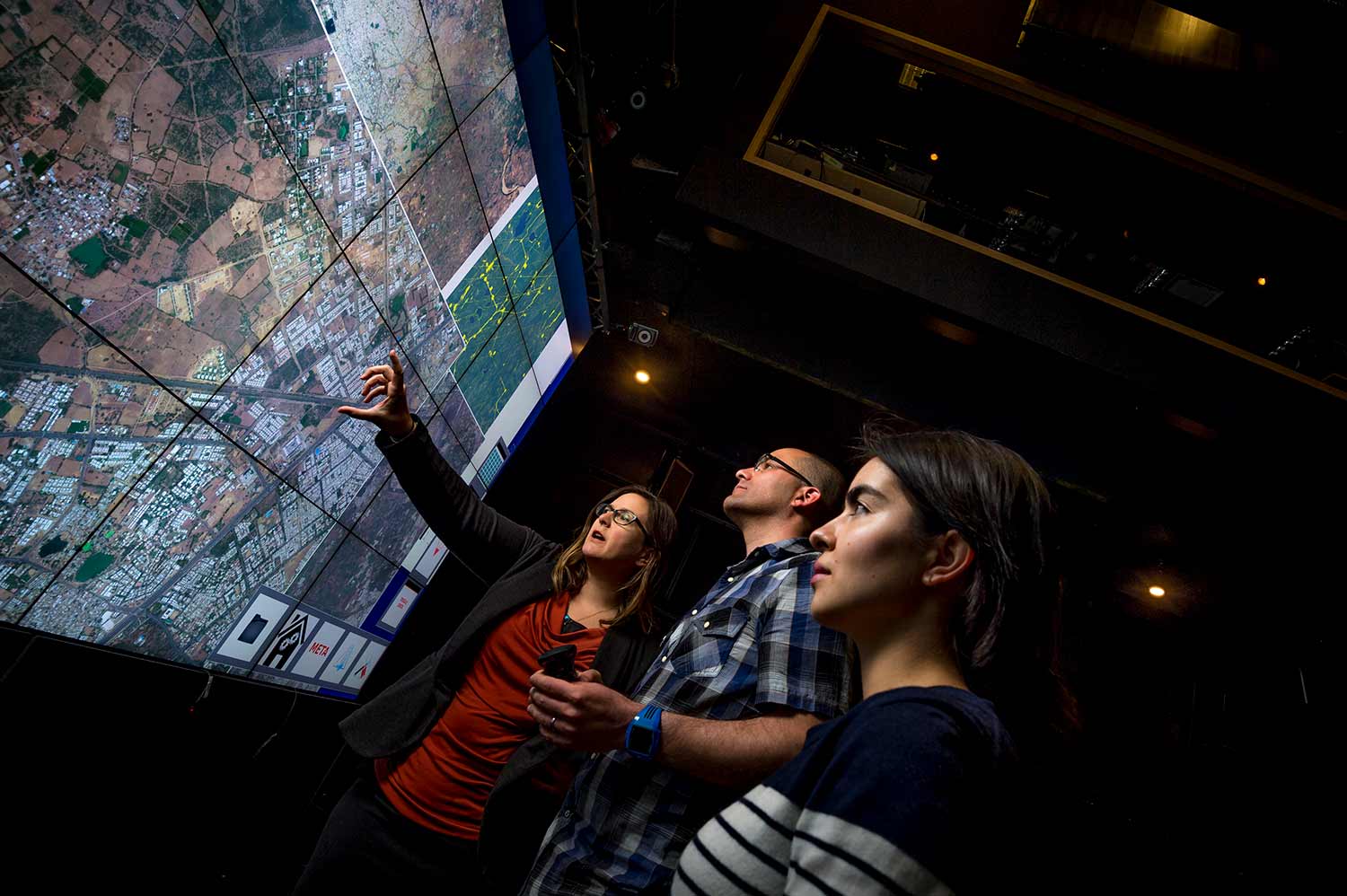
Photo by Erik Jepsen/UC San Diego Publications
Pushing the Boundaries of Border Research
UC San Diego leads multi-university alliance seeking solutions to pressing global challenges
Border communities—those towns and cities that share a boundary with another region—are often critical passageways for economic prosperity: the movement of vehicles, goods and workers through these communities can impact the commerce of an entire city, state or nation.
And these border communities are busy. In 2018, more than 192 million people crossed the U.S.-Mexico border at one of the 17 ports of entry, according to the U.S. Department of Transportation’s Bureau of Transportation Statistics. More than 83 million buses, cars and trains crossed the border, and more than 6 million shipping containers also made the journey.
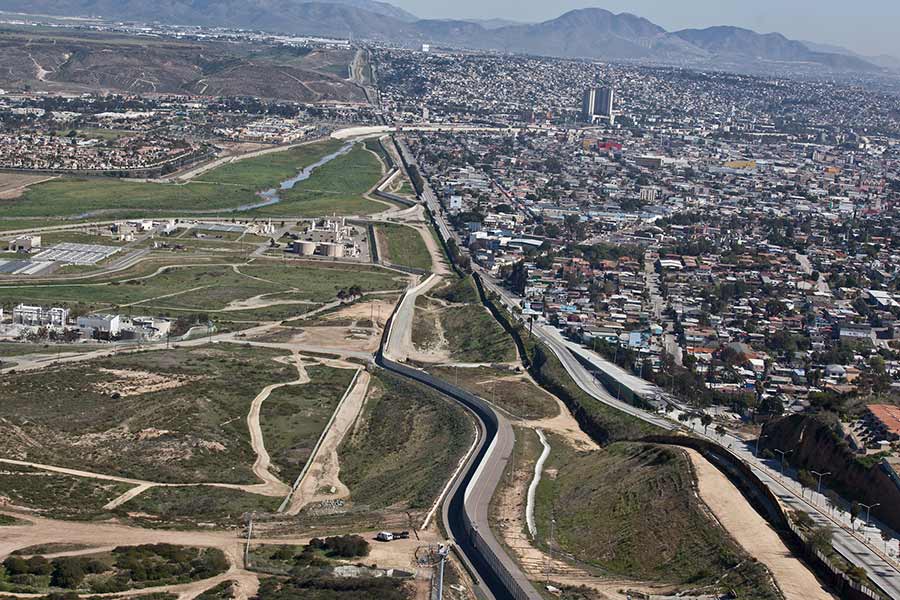
Stark differences are apparent at the U.S.-Mexico border. Credit: U.S. Customs and Border Patrol.
While these statistics may show how busy the border is, it’s not as easy to see the challenges these communities face, how these challenges impact the people who live and work there, and where the solutions may lay. The complex systems at the U.S.-Mexico border replicate global challenges at the local level related to the transformation of production, the health and well-being of people, and regional sustainability—resulting in living laboratories or “test beds” where solutions can be tested in real-time, real-world environments.
The National Science Foundation’s (NSF) Computer and Information Science and Engineering (CISE) directorate, through its Smart and Connected Communities program, provided $100,000 to launch the Border Solutions Alliance. Through a series of community workshops, the research community stretching along the entire 2,000-mile U.S.-Mexico border came together with practitioners, service providers and policymakers to begin identifying shared challenges that could benefit from the research being conducted by universities in border communities.
The Alliance brings together universities from both sides of the border, including the University of California San Diego, University of Arizona, New Mexico State University, University of Texas at El Paso, University of Texas at San Antonio, Universidad Autónoma de Baja California, El Colegio de la Frontera Norte, El Colegio de Sonora, Universidad Autónoma de Cuidad Juárez, CETYS Universidad and Tecnológico de Monterrey.
This multi-university, international collaboration offers an unprecedented venue for experts in science, engineering, technology, and social and behavioral sciences to work with government and industry officials to tackle substantive, real-world problems through the lens of data-driven research and data science-focused education and workforce development.
UC San Diego Chancellor Pradeep K. Khosla praised the Alliance’s unique approach in tackling issues that affect millions of people. “UC San Diego is located in a border community and the issues happening 30 miles south of campus have a direct impact on the university. The Border Solutions Alliance brings together the best researchers in data science, social sciences and engineering from the U.S. and Mexico to create data-driven solutions that will impact the future of the economy, the environment and the health of border regions around the world.”
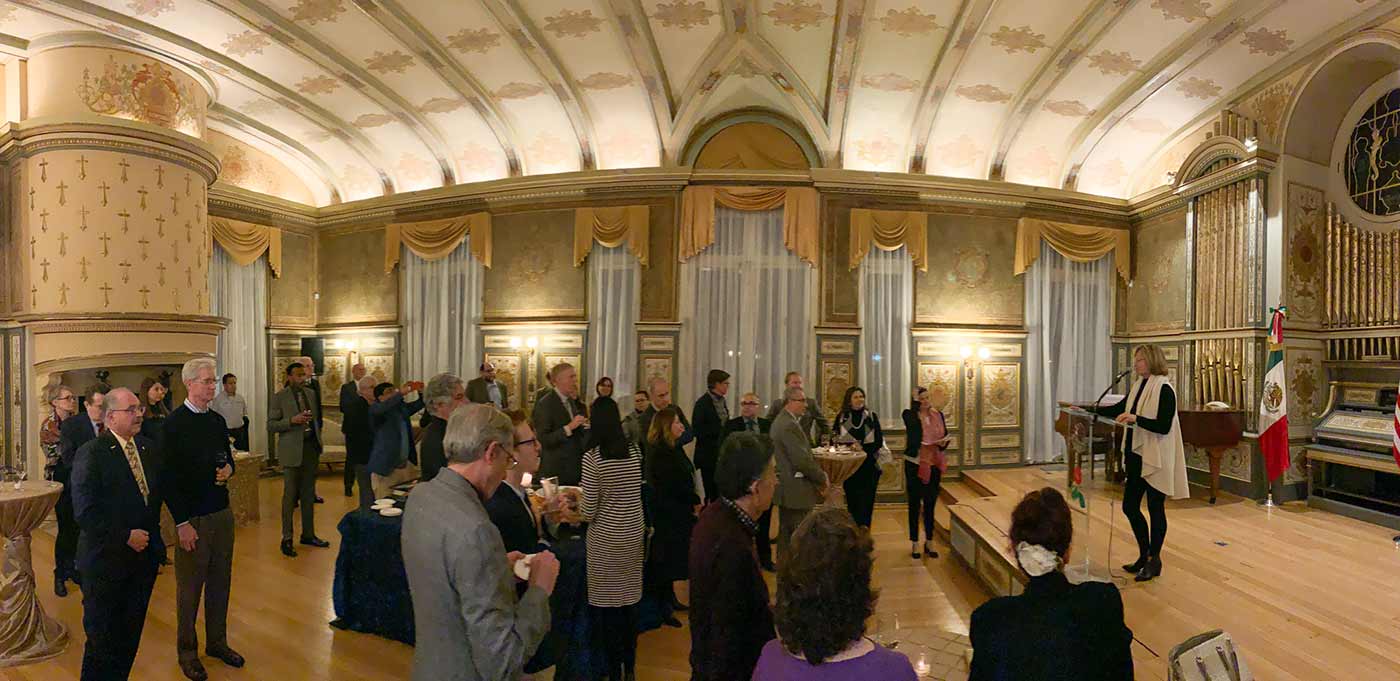
UC San Diego Vice Chancellor for Research Sandra Brown ( r ) speaking at Mexican Cultural Institute during the convocation.
The Alliance focused on six areas of research that reflect the most critical issues of border communities:
- Advanced Manufacturing, including workforce development and trade policy,
- Intelligent Mobility Systems, including supply chain networks,
- Urban Resilience, including climate change mitigation and environmental justice,
- Disaster Management and Resilience, including fires, earthquakes, and public health,
- Healthcare, including data privacy protection and cultural competency in healthcare provision, and
- Water and Sewage Management, including transboundary aquifer management, groundwater assessment and water reuse.
The culmination of the Alliance’s efforts was a convocation, titled “Data-Driven Discovery at the U.S.-Mexico Border,” held earlier this month at the National Academy of Sciences in Washington D.C. Building off the workshops held in June 2019, members presented an initial portfolio of data-driven, use-inspired research efforts to program sponsors and policymakers. Presentations converged around three topics: transformation of production, health and well-being, and regional sustainability.
“The combination of distinct differences and deep connections at the border expose many of the issues and challenges in modeling complex systems,” said Melissa Floca, associate director at UC San Diego’s Center for U.S.-Mexico Studies. “Building a digital twin for the border can contribute to finding solutions while also training the next generation of data scientists through real-world data science projects.”
During the “health and well-being” panel discussion, the concept of a “digital twin” was discussed. A digital twin is a computer-based replica of a physical entity used to monitor and model certain aspects of a physical system. Traditionally, digital twins have been used for complex physical objects such as an aircraft engine, but the Alliance suggested something novel—an open-source, multinational digital twin of the border region.
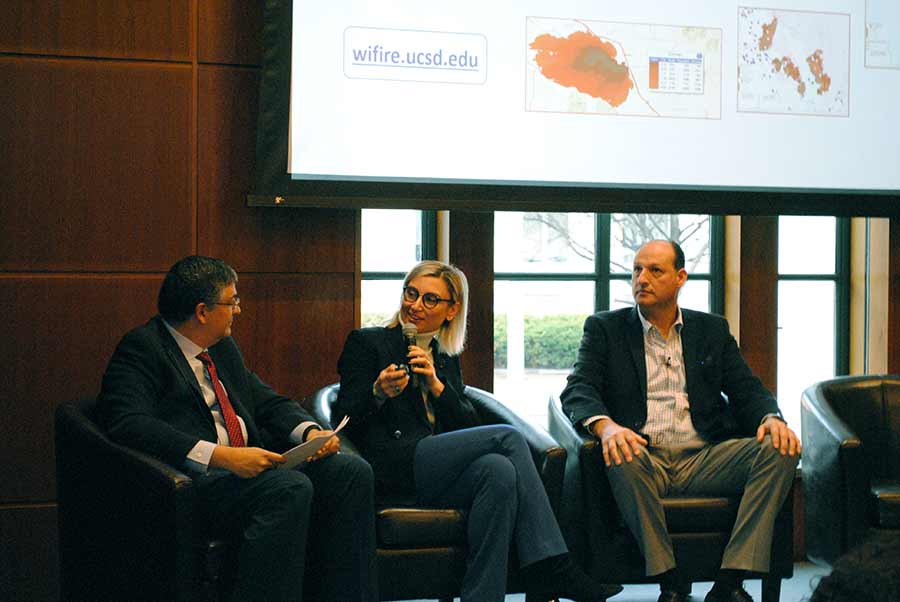
Ilkay Altintas ( c ) speaking on the “health and well-being” panel at the convocation.
UC San Diego’s San Diego Supercomputer Center’s (SDSC) Chief Data Science Officer Ilkay Altintas showed how the WIFIRE platform already puts the digital twin concept into practice. The WIFIRE Lab develops integrated systems for natural hazards monitoring, simulation and response—most notably for wildfires. Altintas shared that the existing WIFIRE platform could be leveraged to create a more generalizable, open tool for researchers, allowing for wider data collection and analysis.
Although the Border Solutions Alliance focused on the U.S.-Mexico border in determining the major challenges and mapping out possible solutions, their work is scalable and adaptable to borders around the world, within the United States, or even within a single city, where often economic and social divides between neighborhoods can be stark.
“The sharp asymmetries in the socio-technical networks that exist along the border, with their stark differences in economic conditions, policy environments and labor supply, present research challenges at the forefront of knowledge in both computer science and the social sciences. The advances made through the basic research on these topics may have unprecedented impact on the communities along the U.S.-Mexico border and other regions with similar characteristics,” says Miroslav Krstic, senior associate vice chancellor for Research at UC San Diego and the principal investigator of the NSF CISE workshop grant.
Share This:
You May Also Like
Stay in the Know
Keep up with all the latest from UC San Diego. Subscribe to the newsletter today.
